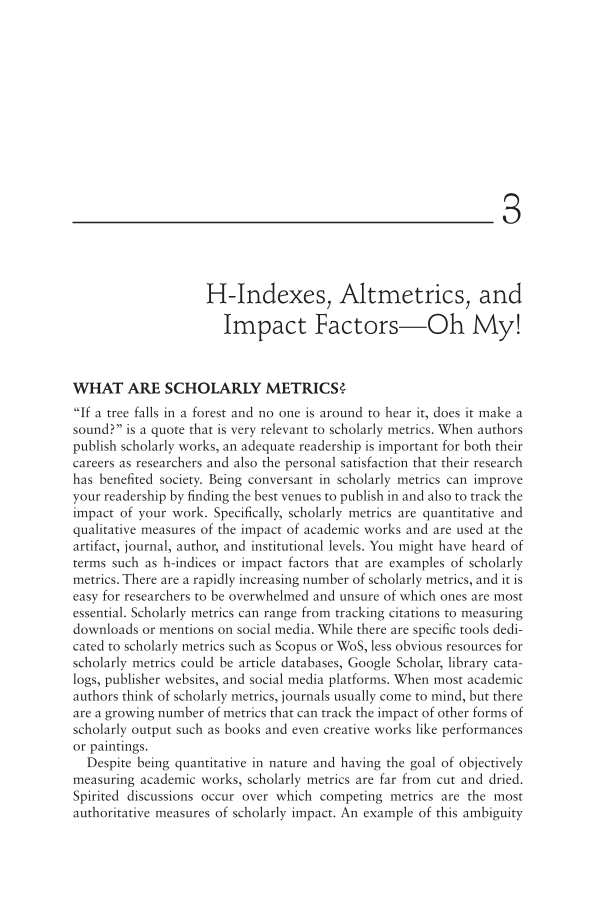3 H-Indexes, Altmetrics, and Impact Factors—Oh My! WHAT ARE SCHOLARLY METRICS? “If a tree falls in a forest and no one is around to hear it, does it make a sound?” is a quote that is very relevant to scholarly metrics. When authors publish scholarly works, an adequate readership is important for both their careers as researchers and also the personal satisfaction that their research has benefited society. Being conversant in scholarly metrics can improve your readership by finding the best venues to publish in and also to track the impact of your work. Specifically, scholarly metrics are quantitative and qualitative measures of the impact of academic works and are used at the artifact, journal, author, and institutional levels. You might have heard of terms such as h-indices or impact factors that are examples of scholarly metrics. There are a rapidly increasing number of scholarly metrics, and it is easy for researchers to be overwhelmed and unsure of which ones are most essential. Scholarly metrics can range from tracking citations to measuring downloads or mentions on social media. While there are specific tools dedi- cated to scholarly metrics such as Scopus or WoS, less obvious resources for scholarly metrics could be article databases, Google Scholar, library cata- logs, publisher websites, and social media platforms. When most academic authors think of scholarly metrics, journals usually come to mind, but there are a growing number of metrics that can track the impact of other forms of scholarly output such as books and even creative works like performances or paintings. Despite being quantitative in nature and having the goal of objectively measuring academic works, scholarly metrics are far from cut and dried. Spirited discussions occur over which competing metrics are the most authoritative measures of scholarly impact. An example of this ambiguity
Document Details My Account Print multiple pages
Print
You have printed 0 times in the last 24 hours.
Your print count will reset on at .
You may print 0 more time(s) before then.
You may print a maximum of 0 pages at a time.





































































































































































































































